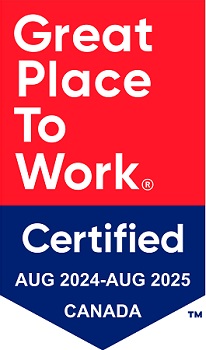
The potential for an economic recession in 2019 has captured the attention of more than a few pundits and journalists. But the smart money is on continued growth, both here in Canada and the U.S. The economy may fail to expand as rapidly as it did last year, but we’re a long way from two consecutive quarters of shrinking gross domestic product (GDP).
Why all this recession talk? There are three primary drivers.
First, Canadians are now into their 10th consecutive year of economic growth. The ink has been black at the end of every year since 2009. When you consider that the average post-recession expansion since the Great Depression has lasted about six years, there’s reason to wonder how long the good news can last.
Second, the yield curve – which measures the difference between the U.S. 10- and 1-year Treasury Notes – narrowed significantly in 2018. That means investors are demanding higher than normal yields on short-term loans to the government, and lower than normal yields on long-term loans. It signals a lack of confidence in the current economy. An inverted yield curve (in which the 1-year note actually delivers a higher yield than its 10-year counterpart) is a strong indicator of recession. That hasn’t happened yet.
The third driver is less precise. Political risk has emerged as a greater concern since the election of U.S. president Donald Trump. Anyone with a cable news subscription knows that Washington’s place in the world has been transformed by the business-man-turned-world-leader. If his unorthodox style or policies lead to something like a full-on trade war with the world’s second largest economy, China, then the consensus view among economists will turn far more sour.
Solid footing
For now, that consensus view is solidly (albeit it conservatively) positive.
Speaking in Toronto last week, Philip Orlando, senior vice president, chief equity market strategist at Federated Advisory Services told a group of institutional investors and investment advisors that his firm doesn’t anticipate a U.S. recession until 2021 or 2022.
“Wages are growing at about 3.2% a year,” he said. “That’s a 10-year high. But historically, you need to get to the 4% level before you trigger the recession discussion. Once you get to 4%, it takes about two years for the recession to come.”
Orlando also pointed to Cornerstone Macro’s U.S. Recession Risk Index, run by the firm’s CEO Nancy Lazar. That index has decades of data and successful forecasts behind it. A score of 60 suggests recession is six quarters (18 months) away. While it has been rising steadily this decade, it’s still only at 53.
A Jan. 11 report from Scotiabank offered similarly reassuring language on the domestic front: “The Canadian economy remains on solid footing, and is far from being on the edge of a precipice, as could be inferred from developments in financial markets over the last few weeks.” The bank predicts 1.8% real GDP growth this year and 2% next year.
Clearly, the economy won’t continue to expand forever. However, barring an unforeseen trigger, or a scenario in which existing risks take a dramatic turn for the worse, there’s reason to feel cautiously optimistic about 2019.


